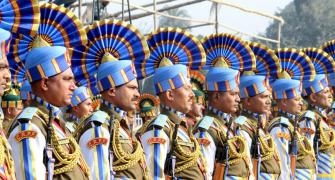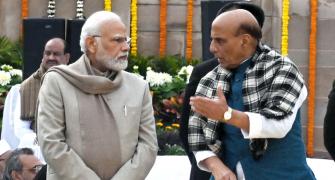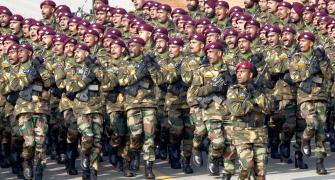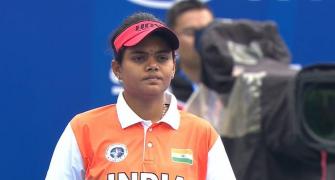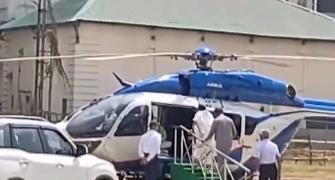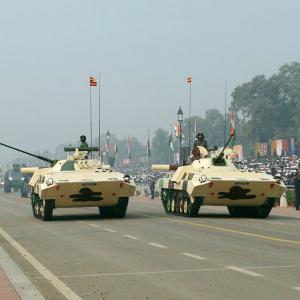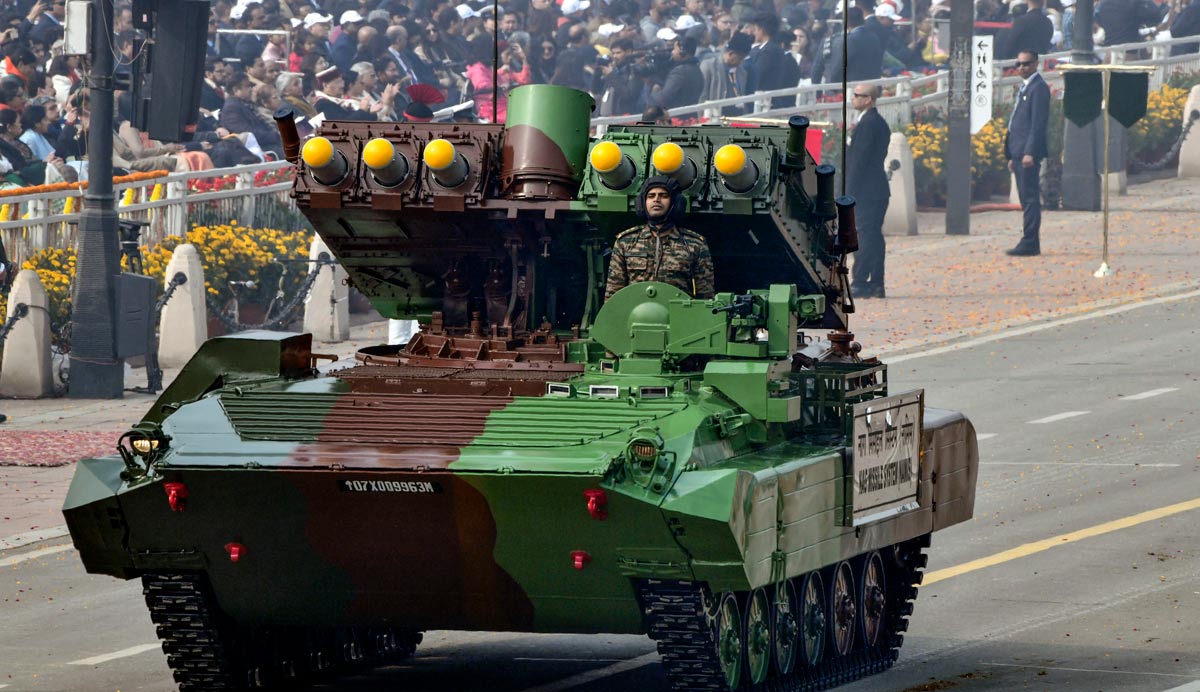India spends significantly less on defence than could be expected from a country that faces simultaneous armed threats from two hostile neighbours -- China and Pakistan.

The finance minister and defence minister have in recent years claimed a rise in the country's total defence allocation.
According to them, defence allocation rose from Rs 5.93 trillion in the financial year 2023-2024 (FY24) to Rs 6.21 trillion in FY25, up 4.75 per cent.
While that is true, the rise is insufficient to cover even the Reserve Bank of India's consumer price index (CPI) inflation, which stands at 5.4 per cent this year. Nor do these figures add to the rise in the cost of forex.
The cost of the dollar has gone up by 1.2 per cent this financial year.
Calculating in a longer time frame, defence allocation has risen from Rs 4.03 trillion in financial year 2018-2019 (FY19) to Rs 6.21 trillion in FY25, a rise of over 55 per cent during the seven-year period.
Another measure of the defence budget's rise or fall is to compare each year's defence spending with that year's central government expenditure (CGE).
That measures a country's nominal defence spending as well as the opportunity cost that it pays. By that measure, the total defence expenditure in FY19 amounted to Rs 4.03 trillion out of the CGE of Rs 23 trillion.
That put defence spending, as a percentage of CGE, at 17.43 per cent.
If the government were to conclude that the defence spend should be 17.43 per cent of its CGE, the next year's CGE of 16.86 per cent would mean a fall in real value of the defence budget.
Furthermore, the pattern of CGE over the last seven years clearly reveals that defence spending during this period declined in a potentially dangerous manner -- from 17.43 per cent of CGE in FY19 to as little as 13 per cent in FY25.
Calculations by think-tanks and arms control organisations, such as the Stockholm International Peace Research Institute (SIPRI) and the North Atlantic Treaty Organisation (NATO), usually evaluate defence spending as a percentage of GDP.
SIPRI tends to approve defence spending of up to 3 per cent of GDP. The NATO charter requires member countries to spend 2 per cent of their GDP for maintaining the military forces of its members.
By this token, India spends significantly less on defence than could be expected from a country that faces simultaneous armed threats from two hostile neighbours -- China and Pakistan.
Furthermore, India spends so little even though it belongs neither to a defence treaty, nor to an armed alliance.
From spending about 4 per cent of its GDP on defence in 1987, India's military spending has progressively declined to less than 1.9 per cent of its GDP this year. That is less than half of what it spent in the 1980s.
Spending on police forces
India's defence allocations cater to spending generously on weapons and equipment, including defence exports, personnel costs and running expenditure. But the real boost in India's spending comes from the rising allocations on internal security.
This expenditure comes from outside the defence allocations and will amount to Rs 1.2 trillion this year.
It covers spending on the so-called Central Armed Police Forces (CAPFs), which amount to over a million armed personnel under the Ministry of Home Affairs.
This million-person armed police reserves include 313,634 active personnel of the Central Reserve Police Force (CRPF), 265,000 policemen of the Border Security Force (BSF) and 163,590 active personnel of the Central Industrial Security Force (CISF).
They also include 89,432 active personnel of the Indo-Tibetan Border Police (ITBP), 94,261 troopers of the Sashastra Seema Bal (SSB), the 65,143 riflemen of the Assam Rifles and the National Security Guard (NSG) with about 10,000 highly-trained commandos.
In the opinion of many defence analysts, the central government keeps these police forces active and functional for two reasons.
First, they provide a reserve of trained and equipped personnel, who can be called upon to react to unforeseen situations, from the holding of elections, disaster relief or communal riots.
Secondly, since 1947, India's political class has sought to 'coup proof' the military by creating an armed police force that can counterbalance against any political move by the military or police personnel. That function is discharged by the CAPFs, by deploying them to oppose any political move by the military.
Feature Presentation: Ashish Narsale/Rediff.com


